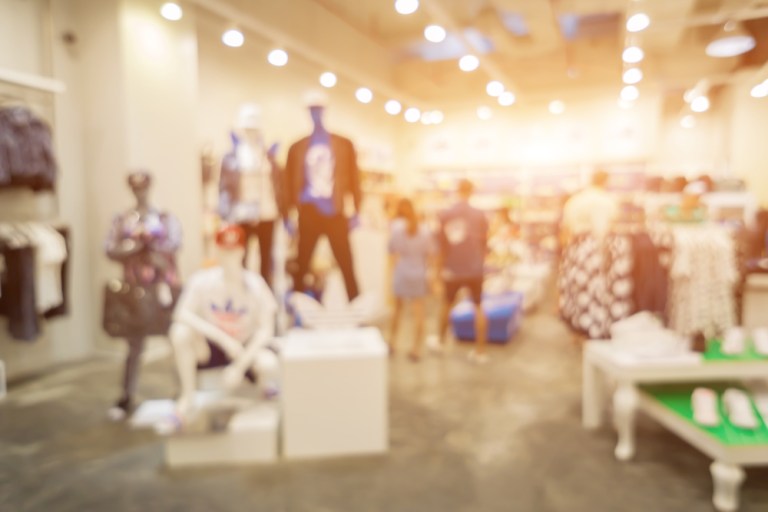
Luxury retail isn’t such a cushy business these days.
Nordstrom might be going private, the retail company announced in news Thursday (June 15). The Nordstrom family collectively owns 31 percent of shares and is exploring a potential transaction that would put the rest in family hands. eCommerce has taken a $75 billion bite out of the Nordstrom business since 1999, dragging total sales down from $230 billion to $155.5 billion.
Michael Kors is closing over 100 stores this year while it reinvents itself. Declining foot traffic took an 11 percent toll on the company’s total revenue in its fiscal fourth quarter.
Comparable store sales plummeted 14.1 percent from the previous quarter, while retail net sales climbed only 0.5 percent (attributable to new acquisitions in China). Michael Kors did worst in the Americas but almost as poorly in Europe, which used to be the rock that kept the whole operation from crumbling.
Luxury retail store Neiman Marcus — or “Needless Markup,” as it’s known to people who can’t afford to shop there — has been bringing down the markups in response to competition and shrinking demand. The company is $4.9 billion in debt and logged a net loss of $24.9 million last quarter.
Neiman Marcus was allegedly in merger talks with Saks Fifth Avenue parent Hudson’s Bay Co., but those talks have terminated, the company said.
Fortune predicts that things are about to get better, but the trends are the trends. Luxury retail isn’t seeing setbacks because of the economy or uncertain political environment. It’s seeing it because the retail landscape has irrevocably changed, and any retailer that doesn’t change with the times is just prolonging the inevitable.
That’s where luxury e-tailers like Net-a-Porter and Farfetch are winning big.
“Department retailers have digital, but they have been slow to adapt to online and grasp its importance,” said Katie Smith, senior fashion and retail analyst at EDITED, who has closely studied the boutique-based platform at Farfetch.
The U.K. eCommerce unicorn has an especially unique structure: As a platform, rather than a retailer, it keeps no stock, but rather connects shoppers with boutiques around the world.
The price point skews higher than much of the luxury market, but for luxury shoppers, that’s even more of a selling point. They know they’re getting a true luxury item — something straight from Italy or Australia that a high-end department store simply wouldn’t have.
“They have kind of rewritten the retail model,” Smith said of the eCommerce company. “They’re not just focused on the big brands; they give shoppers that niche feeling of ‘I’ve stumbled upon a little shop on a street in Milan and found this great product I can’t find anywhere else.’”
Though the Farfetch website doesn’t show which boutiques it’s partnered with, savvy boutiques see that tourism is changing and foot traffic is slowing and they’re going to need new strategies to keep their business afloat, and Farfetch is using one of those strategies.
But Farfetch is in a different spot than Michael Kors and the rest, so it’s apples and oranges to put them side by side. Farfetch isn’t a luxury retailer trying to go digital. Founded in 2007, just as it was becoming clear that eCommerce was about to be a huge thing, Farfetch is digital-first.
Only now, 10 years later, is it starting to think about opening its first brick-and-mortar store — and with the theme “store of the future,” it’s a pretty sure bet that digital will still be front and center.
“They’re a technology company first, so they’re fantastic in latching onto changes in consumers and changes in the consumer landscape,” Smith said, though she couldn’t comment on any of the specifics around the Farfetch theme.
Though Farfetch is a different beast, Smith thinks there are still a few leaves that traditional luxury retailers could take out of its style book.
First, Farfetch has no endless discount cycles. There’s no waiting around for a month until something goes on sale. Instead, there are clear discounted seasons. That keeps a lot of items off the virtual clearance rack altogether and ensures shoppers that they are paying a fair price for a unique item.
“The full price is the right price,” said Smith.
Second, there is a good selection at every price point. Some retailers focus too heavily on the lower end of pricing — the under-$150 range — to try to draw in new customers with smaller items, such as accessories, to get them hooked on the luxury experience.
By contrast, said Smith, “Farfetch is true luxury.”
Third, the company boasts a consistent, engaging and attractive newsletter. And that newsletter could get even more engaging in the near future, since Farfetch just bought Style.com with hopes of building a broader community around its marketplace and styles.
Traditional retailers, take note. Farfetch has been so successful that the eCommerce company — a tech venture at its core — achieved unicorn status and is now looking at an IPO. It announced in news this week, however, that it’s taking its time going public, but the ball is definitely rolling.
“Their growth has been so positive,” said Smith. “They’ve got such a niche; they’re doing something that no other retailer in the world is doing. [With the IPO,] they’re looking to expose that as much as possible. They’ve got unicorn status within tech, so they’re using this moment to rocket that.”
The industry, it goes without saying, will be watching closely.